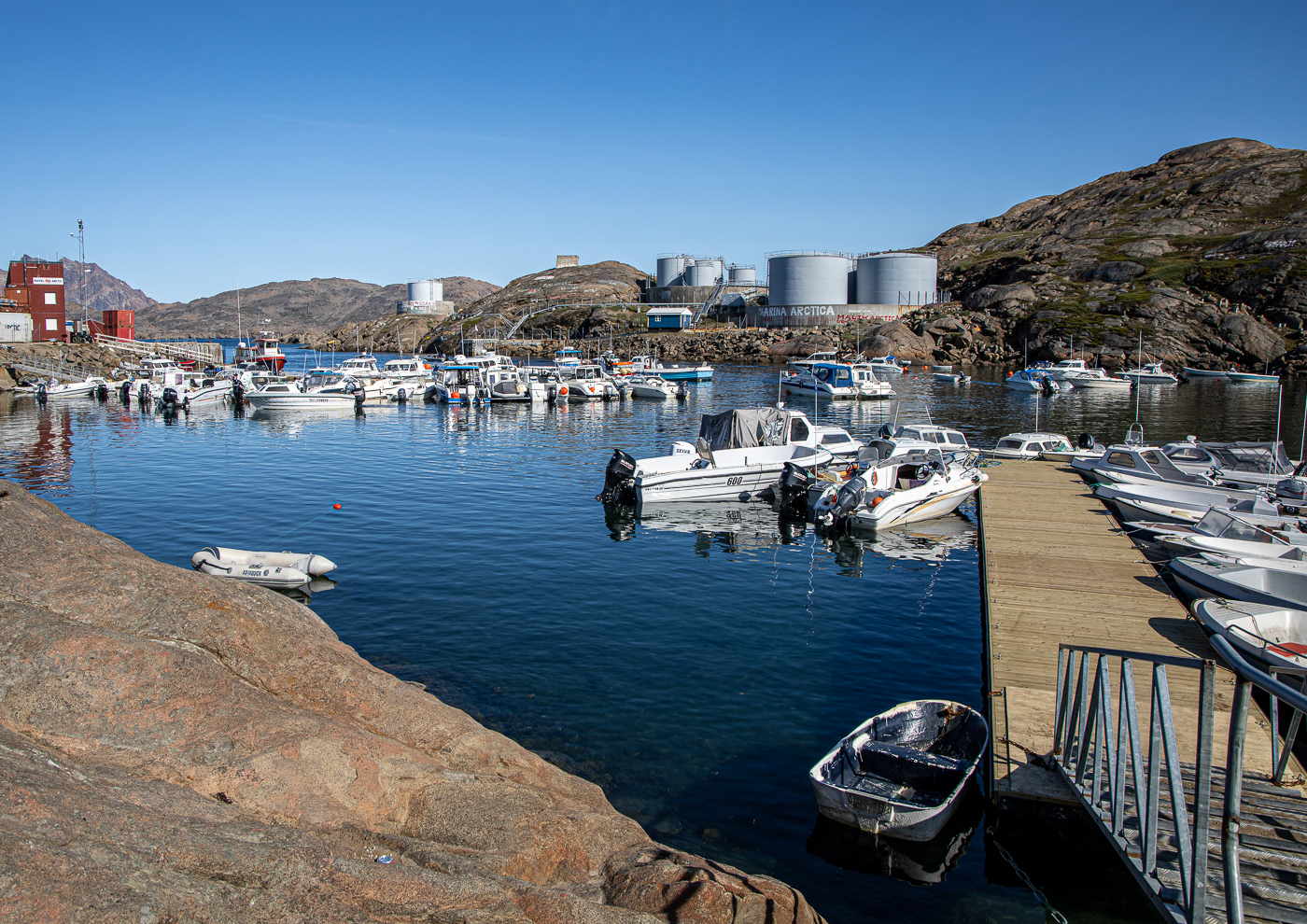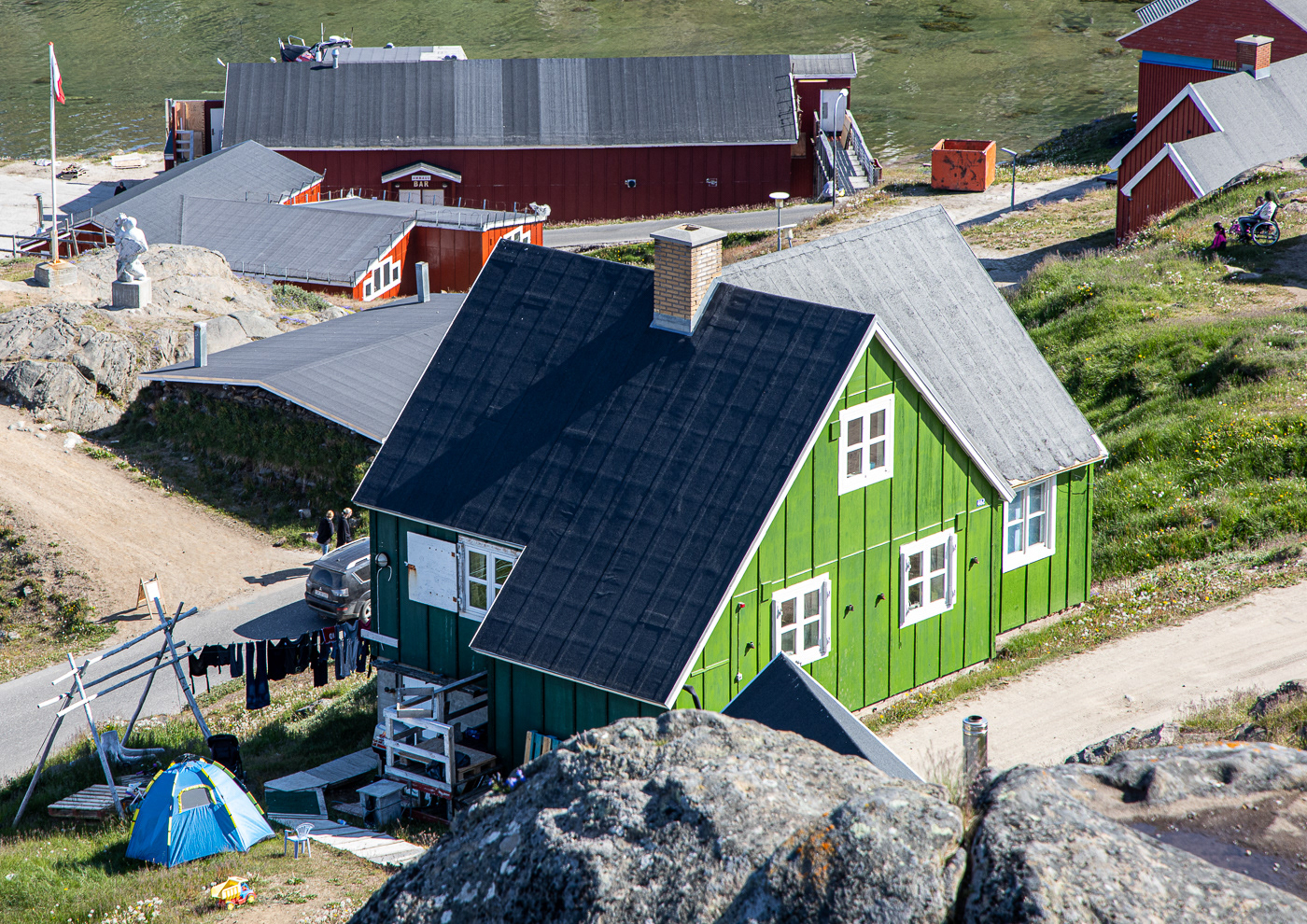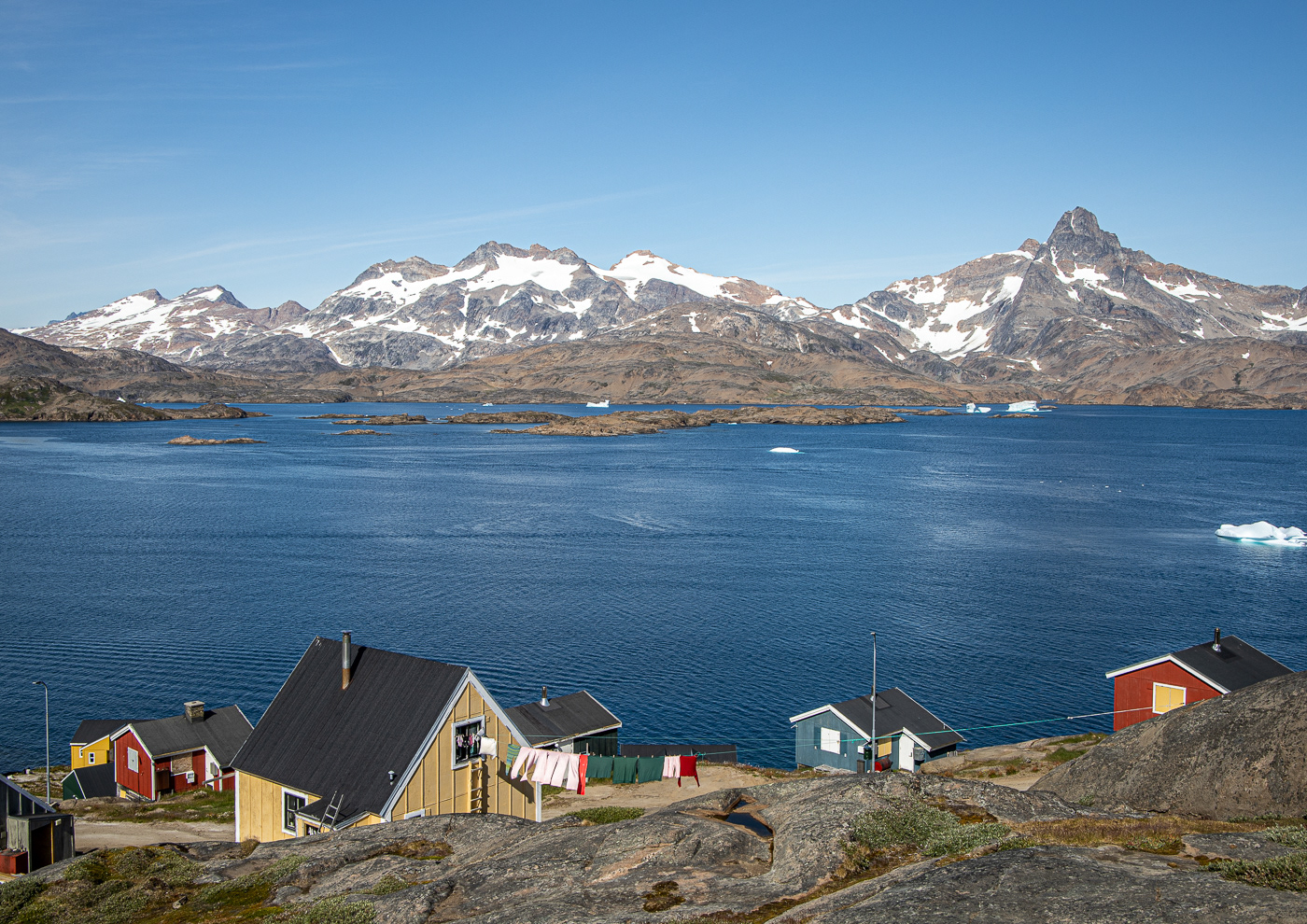Aappilattoq
There are some tiny settlements dotted around the coast, mainly in the milder south west. Aappilattoq is the only settlement in Prins Christian Sund, a waterway that separates the mainland from an archipelago at the southernmost tip of Greenland. The settlement was founded in 1922. Today there are about 150 people and their average age is just over 30. They make their living from hunting and fishing. The settlement has a local authority service house, general store, general repairs workshop, fire station, school, church and heliport. The peaks that dwarf the village at the water's edge are almost 2000m high, but are unglaciated.




Tasiilaq
Over the last 30 years, many of the small settlements have been abandoned and people have migrated to larger towns. With just over 2000 inhabitants, Tasiilaq is the largest settlement on the east coast, and growing fast. It was the only settlement on the east coast in the 19th century and in 1894 a Danish trading station was founded there. It is the main location where East Greenlandic is spoken, and local craftsmen produce wonderful traditional carvings of animals and monsters from caribou antler, walrus tusks and narwhale tusks. Narwhale cannot be exported from Greenland and walrus needs a licence. Most visitors buy the caribou antler carvings. The town is just south of the Arctic Circle on the shores of a natural harbour. There are no roads outside the town and transport is by boat or helicopter.









Nuuk
Nuuk is the largest city of Greenland. At 18,000 inhabitants, it accounts for half the immigrants in Greenland, mainly Danish, and a quarter of the native population, and it is also growing fast. It's the most northerly capital in the world, being a few kilometres north of Reykjavik. The city was founded in 1728 by the then Dano-Norwegian government but it has a much longer history. The area was occupied by pre-Inuit people around 2000BC. It was the area of the Vikings' Western Settlement from 1000 to about 1400, and more recently it was inhabited by Inuit. The 18th and 19th century European settlers brought diseases that decimated the native population, who also did not cope well with the settlers' culture. The 20th century brought a reawakening of Greenlandic national identity, and Greenland is now an autonomous country of the Kingdom of Denmark.






Almost all the buses in Greenland are in Nuuk.
Sermitsiaq is a 1210m tall mountain and its summit is visible from most places in Nuuk.